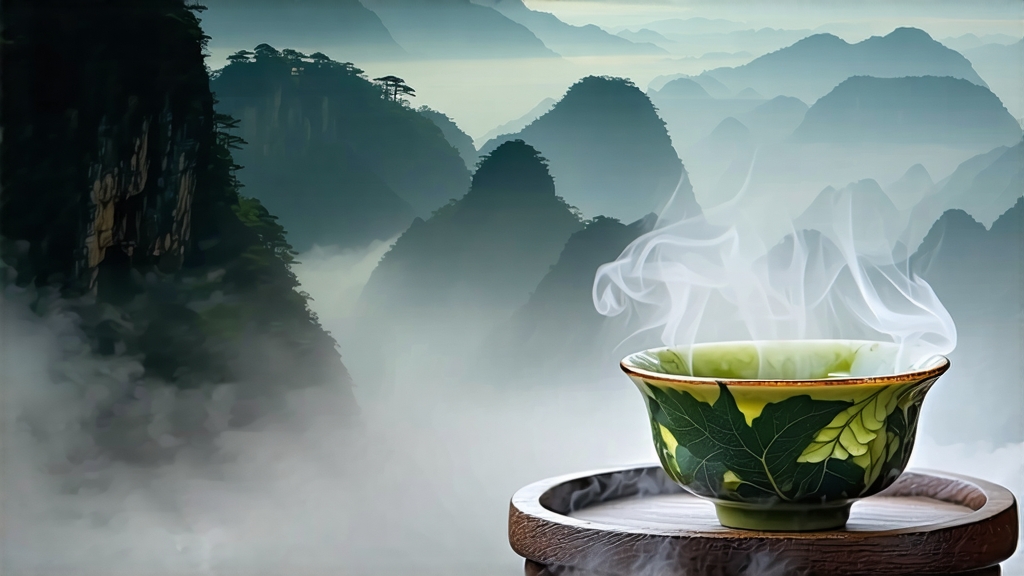
Tieguanyin, literally “Iron Goddess of Mercy,” is the most aromatic jewel in China’s oolong crown. Born in the granite ridges of Anxi, southern Fujian, this semi-oxidized tea has bewitched poets, merchants, and emperors since the Qing dynasty. Legends disagree on the exact year—some say 1736, others 1742—but all versions agree on one detail: a humble farmer named Wei Yin was led by the scent of incense to an abandoned iron statue of Guanyin, the Bodhisattva of Compassion. After restoring the shrine, he dreamed of the goddess pointing to a lone tea shrub behind the temple. The next morning he transplanted it to his garden, propagated the bushes, and the first Tieguanyin was born. The leaf was so fragrant that locals believed Guanyin herself had pressed her perfumed sleeve against the mountain.
Anxi’s microclimate is the invisible co-author of the story. Morning fog rolls up the Jinsha River gorge, trapping cool moisture around rocky, well-drained lateritic soil. The bushes, mostly the clonal Hongxin Waiwei Tao cultivar, grow slowly at 500–800 m, thickening their cell walls and concentrating aromatic precursors. Farmers still practice “terrace-free” cultivation; instead of carving steps they plant under scattered forest, allowing wild orchids and ferns to share the terroir. The result is a living library of floral volatiles—linalool, geraniol, indole—that later explode in the cup.
Tieguanyin is not a single tea but a spectrum of styles divided along two axes: oxidation level and roasting intensity. The freshest expression, “qing xiang” (light fragrance), is barely 18 % oxidized and unroasted, preserving jade-green leaves that smell like spring hyacinth. At the other pole lies “nong xiang” (thick fragrance), 35–40 % oxidized and charcoal-baked for up to 30 hours, yielding mahogany leaves and a liquor reminiscent of toasted almond and dried longan. Between them oscillate “xiao zhong” (light bake) and “zhong huo” (medium fire), each vintage calibrated to the tea master’s intuition and market mood. Since 2005 an avant-garde “modern fragrance” school has pushed oxidation below 15 %, creating neon-bright aromatics that snap like green apples, while heritage makers defend the slow charcoal craft as the only path to yun—a throaty, cooling echo that Chinese tasters call “rhyme.”
The crafting choreography begins at 2 a.m. when dew-weighted leaves are plucked by head-lamp. Only the standard of “yu ye” is accepted: one bud plus the top two or three leaves, the third still half-unfurled, guaranteeing the ideal ratio of polyphenols to soluble sugars. By dawn the baskets arrive at the village factory, where they are spread three centimeters deep on bamboo trays to wither under mountain breeze. Sun-withering lasts exactly 25 minutes if the sky is clear; on overcast days infrared lamps supplement the weak winter light. Next comes the “yao qing” dance—shaking green—unique to Tieguanyin. Thirty kilos of leaves are tossed inside a cylindrical bamboo drum rotating at 18 rpm; edges bruise against edges, triggering enzymatic oxidation while preserving the leaf center. Masters listen for a subtle rustle like silk fans, the audible cue that cell walls are rupturing. This step repeats five to seven times over four hours, each interval longer and gentler, until the leaf emits a peach-like perfume.
Oxidation is arrested by the “sha qing” kill-green: leaves tumble for 45 seconds in a 280 °C wok, hot enough to denature polyphenol oxidase but brief enough to keep chlorophyll intact. Immediately afterward they are wrapped in square cloth bundles and rolled under mechanical stone blocks, twisting leaves into the signature dragonfly-head shape. A unique “bao rou” second rolling follows: cloth knots are tightened every ten minutes, compressing cells so that aromatic oils migrate to the surface. The tighter the knot, the more concentrated the future infusion. Finally, leaves are dried in three passes—80 °C, 60 °C, 50 °C—reducing moisture to 4 % while locking in floral esters. For traditional styles, the journey continues into roasting pits.